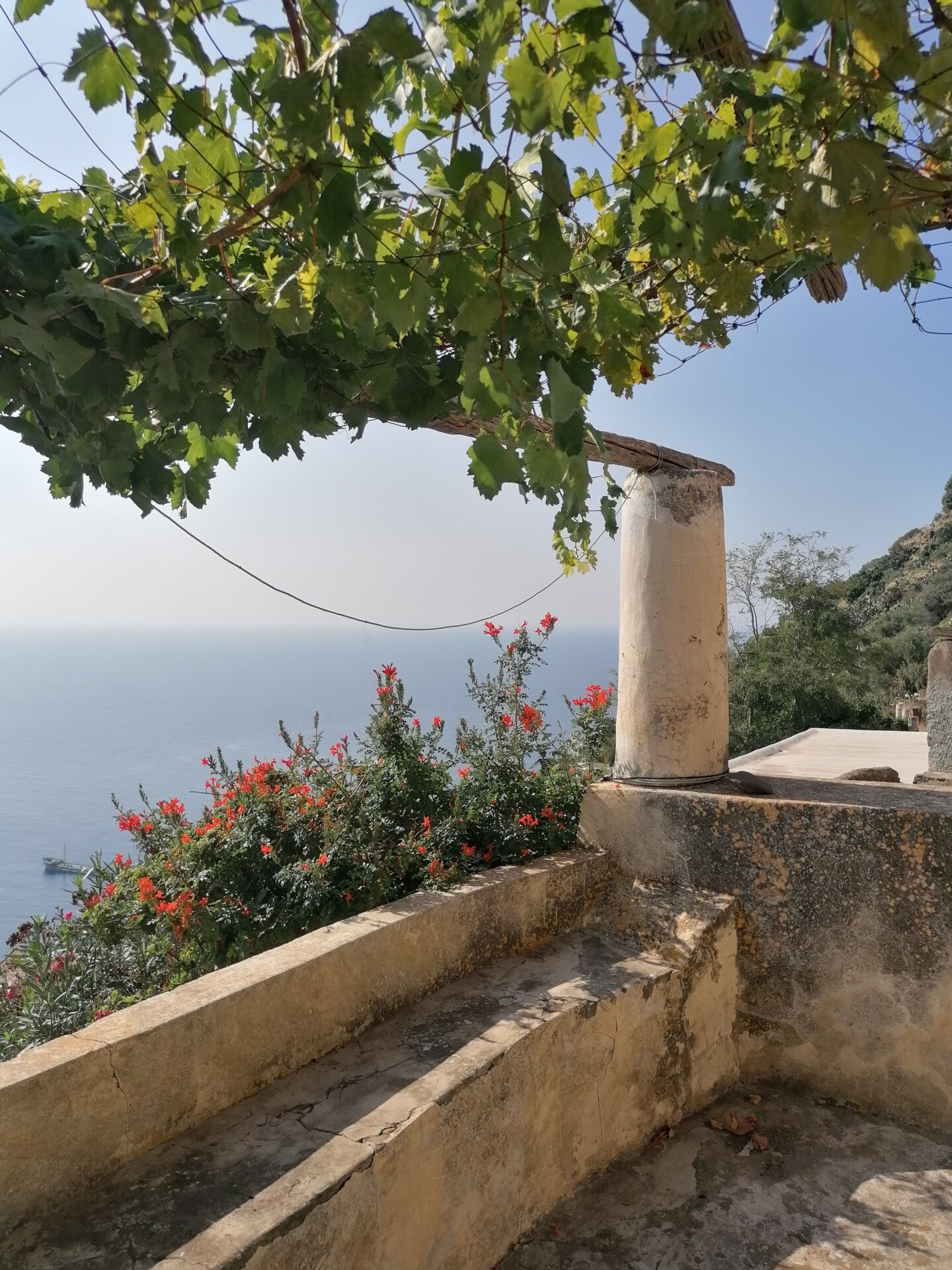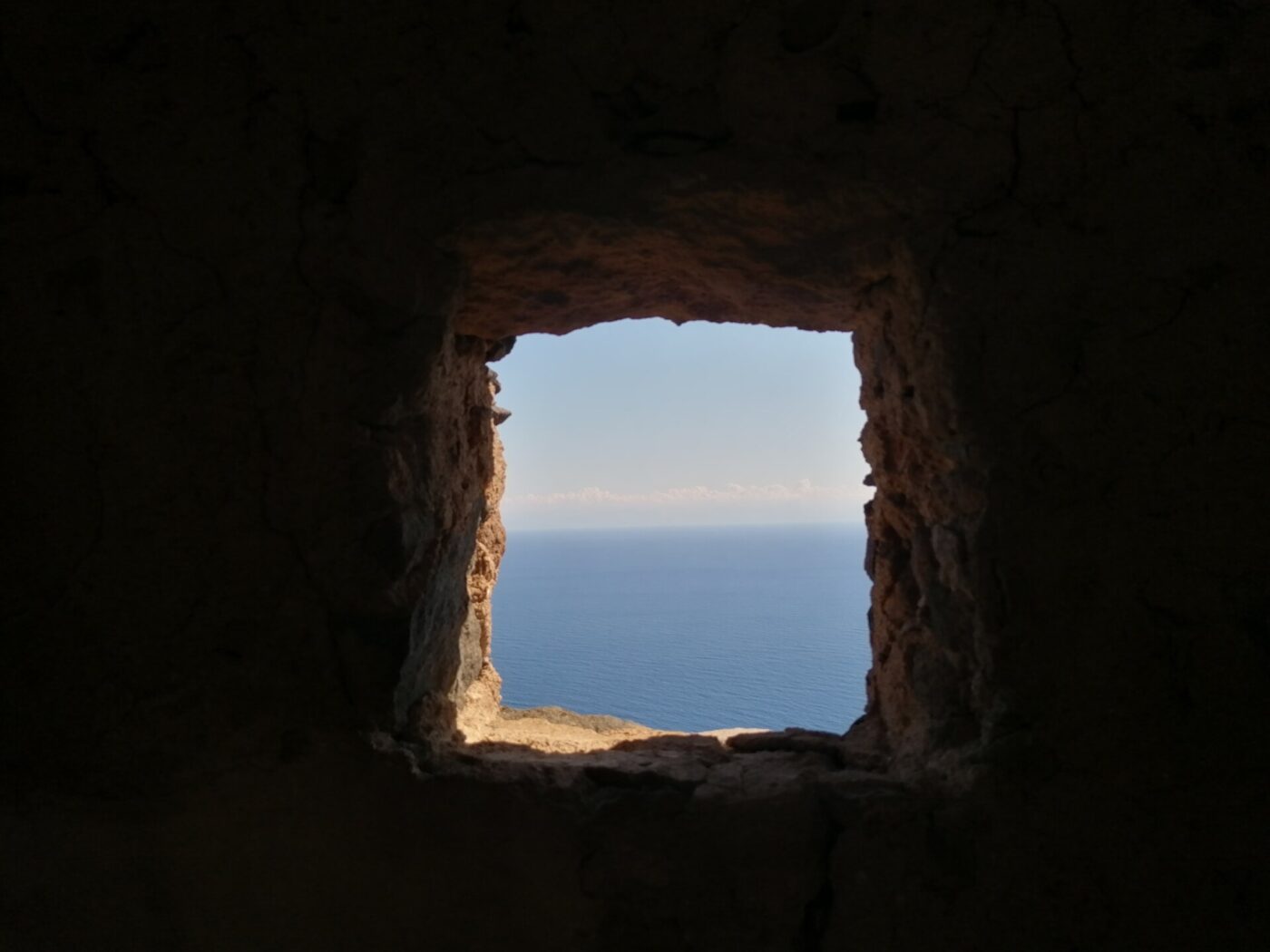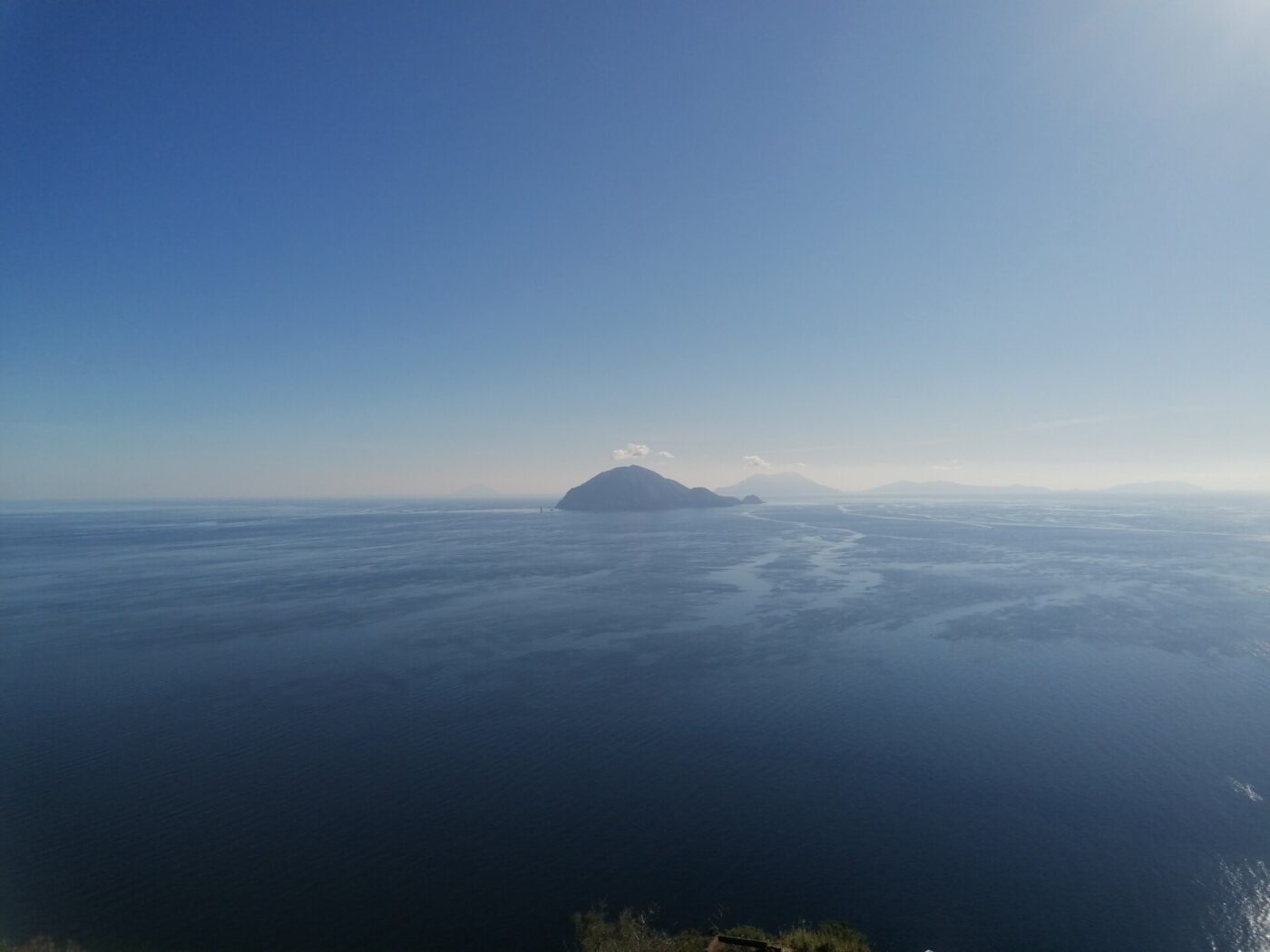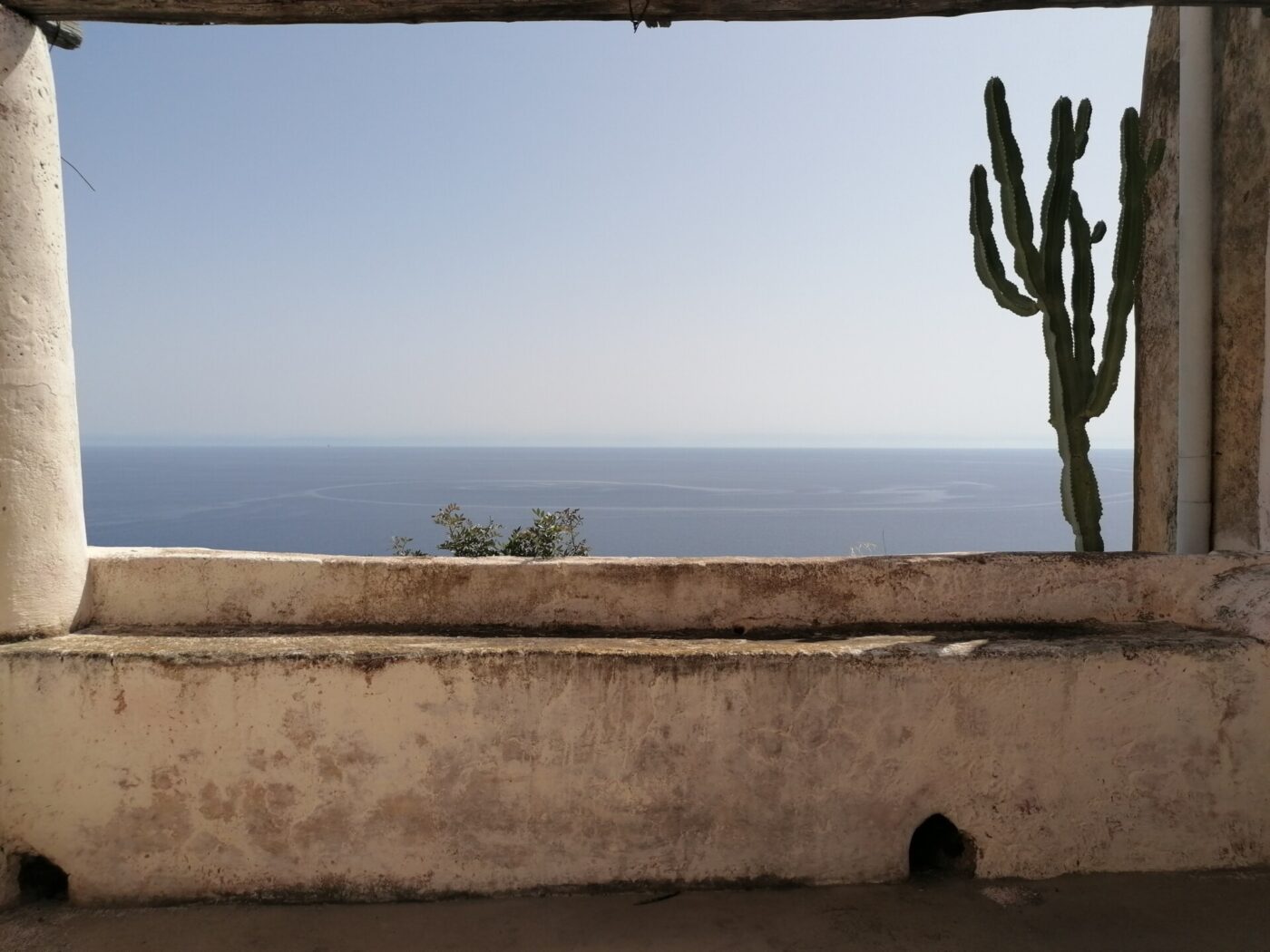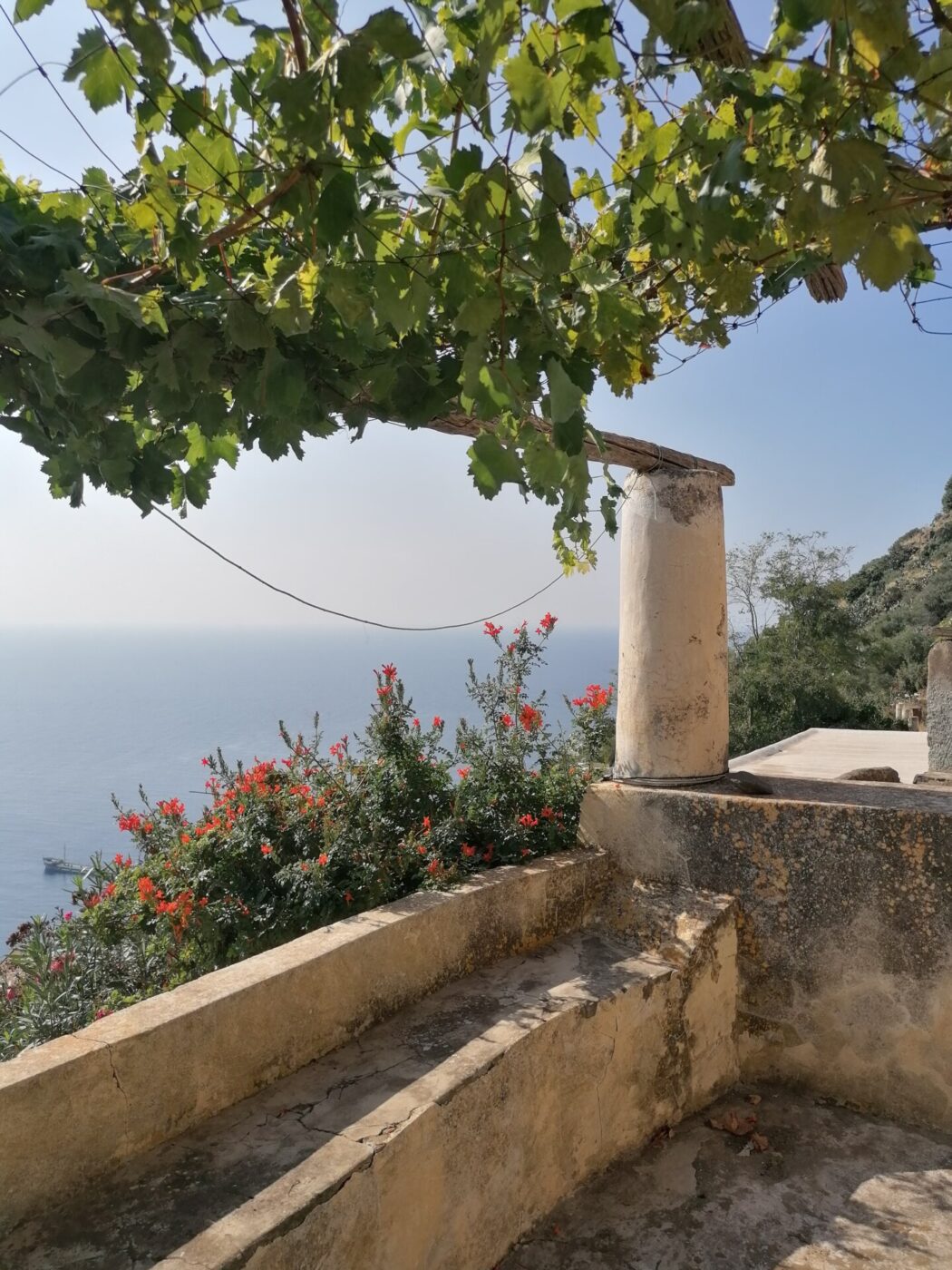Alicudi–it’s unlikely you have a friend living there today. The tiny, desolate Sicilian island (referred to by some as Filicudi’s wilder, more rugged “twin”) is one of the most intriguing sites in the volcanic Aeolian archipelago.
There are no roads on Alicudi. No cars either. When you arrive by ferry from Lipari, some locals might point out a blush-pink villa, the old village mill where hallucinogenic bread was supposedly prepared each morning in the early 1900s. Others might not. But, there is undoubtedly something about this island. It’s a desolate paradise that assumes another character under the cloak of night, the kind of place on earth where fantasies can fly free and where other-worldly experiences seem entirely possible. It has, and continues to, beguile visitors who are infatuated by its stark beauty and alluring history of supernatural happenings–flying witches, ghosts, transfiguration, and the like.
Call these tall tales, if you will, but, fact is, they continue to intrigue scholars, researchers, media, and tourists around the world to this day. But one in particular stands out among them: Alicudi’s hallucination-inducing rye bread. The now-infamous story–which has been glorified in international press and has been the subject of more than one documentary and news story–tells of inadvertent mass LSD trips on the island caused by the local loaves. Apparently, the bread was “accidentally” laced with rye claviceps purpurea, a fungus more commonly known as ergot, the base element of the drug LSD before it was scientifically synthesised in 1938. Eating ergot in their daily bread is said to have sent the whole island into a hallucinatory spin from 1902 to 1905 (although others say this went on for decades), during which time inhabitants witnessed extraordinary visions and experiences of the supernatural.
It’s strange, to be sure, but what’s stranger is that, to this day, Alicudi’s residents are not only reluctant to talk about the rye, but many flat-out deny that this event happened at all.

Most scholars, researchers, and medical professionals believe the “crazy rye” is the only logical explanation for the series of supernatural events and happenings on the island that have been documented throughout history. They believe that the infected rye was the result of poor hygiene, isolation, and poverty on the island, which meant food was scarce and even fungus-infested grains were eaten. Among this camp is Elio Zagami, a renowned psychoanalyst with Alicudare lineage, who proposed that village women would communally bake the hallucinogenic bread each morning, then consumed by all families on the island. Mass hallucinations, hypnosis, and hysteria causing visions of flying witches and sorceresses (known as mahare), ghosts, and men morphing into donkeys is what followed breakfast, lunch, and dinner.
Some locals, though, disagree. I quickly discover the strong refutation of the event after cold-calling one of the island’s few tourist accommodation spots, to ask if anyone might have more knowledge about the subject. The concierge insisted, in what I understood to be a flurry of dissent with a few curses in the mix, that the story is ASSOLUTAMENTE NON VERO. He did not wish to discuss it. He hung up the phone. I called another place, same response. There seemed to be a strange code of silence around this topic. Curious.
And then I met Marilena Macrina Maffei. The anthropologist, author, and researcher of marine culture enters my orbit at the precise moment I find myself spinning into a deep, dark, ergot void. Maffei has spent years living and working across the Aeolian Islands and has published a number of books and academic papers concerning the narrative traditions and ethnography of the region’s people, lands, and waters. Two of her books are of particular interest: La danza delle streghe. Cunti e credenze dell’arcipelago eoliano (2008) and Donne di Mare. Una storia sommersa dell’arcipelago eoliano (2013). Maffei began her research on the islands in 1981 and has also worked on a series of documentaries for which she recorded, first-hand, family stories of supernatural events and experiences straight from the mouths of locals on Lipari and Alicudi. And, for Maffei, the rye bread story is “fake news”.
She explains that what we are dealing with here is a deeper survey of the Aeolian archipelago’s culture and traditions, which are often historically linked to the supernatural. According to Maffei, the rye bread story was fabricated as a means of explaining these fantastical narratives. One such recurring story she’s been told by locals on Alicudi is that of women who lived double lives as witches without even their families knowing. Each night, they would anoint their naked bodies with magic ointment and fly across the seas to nearby Palermo, mainland Calabria, or to Naples. Maffei has recorded similar versions of this story on other Aeolian islands of Lipari, Salina, Vulcano, Panarea, and Filicudi.

With this in mind, is it really just a matter of “something in the bread” on Alicudi? Maffei points out Zagami again, who she believes was the one to first plant the seed about ergot-infused rye bread in an interview from 1991. Zagami posited that the rye grains, called jrmanu on the island, each contained “hundreds of thousands of doses of LSD.” He continued, “All the magic stories, as far as I can ascertain, take place in a very short space of time, three years. Not only that, but they have hallucinogenic characteristics: people flying and transforming into animals, which align exactly with the symptoms of LSD use.”
“In the past, people reasoned in more physical, more material ways, and above all, their approach to reality was based on stories and analogy, not based on logic. That is why mantic techniques flourished…hence astrology, fortune telling, and so on. Under particular conditions of stress, fatigue, or fasting, the analogical mind can re-emerge…this is probably what happened in Alicudi following the ergot epidemic, which was in fact an LSD epidemic,” Zagami proposed.
Zagami’s claim that the hallucinatory bread only existed on the island from 1902 to 1905, a specific period during which these visions of the supernatural occurred, is refuted by Maffei. She, on the other hand, has been collecting stories from Aeolian people across the seven islands, telling of events experienced by their parents and grandparents spanning a period much longer than those three years. In addition, she counters Zagami’s view by asserting that the ergotism (poisoning) caused by ingesting the rye does, in fact, cause visions and hallucinations, but also manifests in serious physical ailments such as convulsions, epilepsy, gangrene, and even death–“all of which there is no trace of in the history of Alicudi,” she says.
She also questions Zagami’s intense focus on supernatural events solely occurring on Alicudi, neglecting to discuss their presence on the other six Aeolian islands. Maffei reminds me that while these visions and apparitions of the supernatural must remain confined and understood as part of a “strictly cultural framework” that also considers the social and cultural role of women on these largely isolated islands, they span the entire archipelago. Witches were–and are–flying to all seven islands, not just Alicudi.
Perhaps Alicudi’s supernatural narratives are not a matter of factual events or altered perceptions, nor are they a question of being true or false. History welcomes many perspectives and interpretations on such events, particularly when witches are involved. However, we must remember–especially as visitors to the island and the wider archipelago–that its folklore and narratives have given locals an essential sense of identity and belonging for thousands of years. Perhaps the point is that the island’s mystical history is prompting people all over the world to engage with Alicudi’s stories and traditions with more depth and intention beyond the attention-grabbing LSD hype. There are scholars, like Maffei, who have now dedicated their careers to cultural and ethnographic research, living on the island, engaging with locals, and undertaking extensive surveys.
She has, perhaps, proved the psychedelic rye story to be categorically untrue. But, the only people who know for sure are long gone, leaving only their descendants to conceal a deep secret or perhaps, in their silence, to keep the mystery alive.

